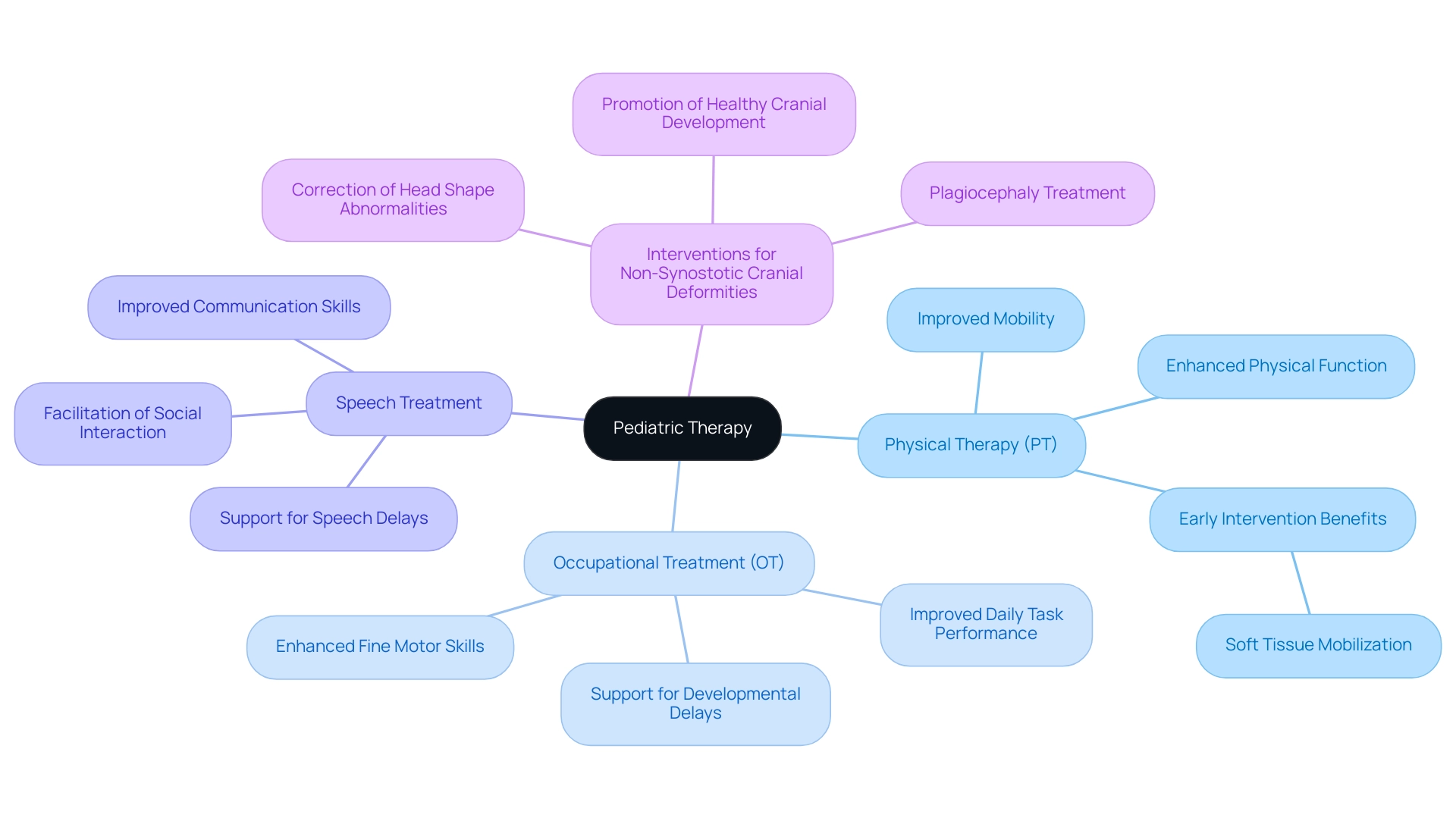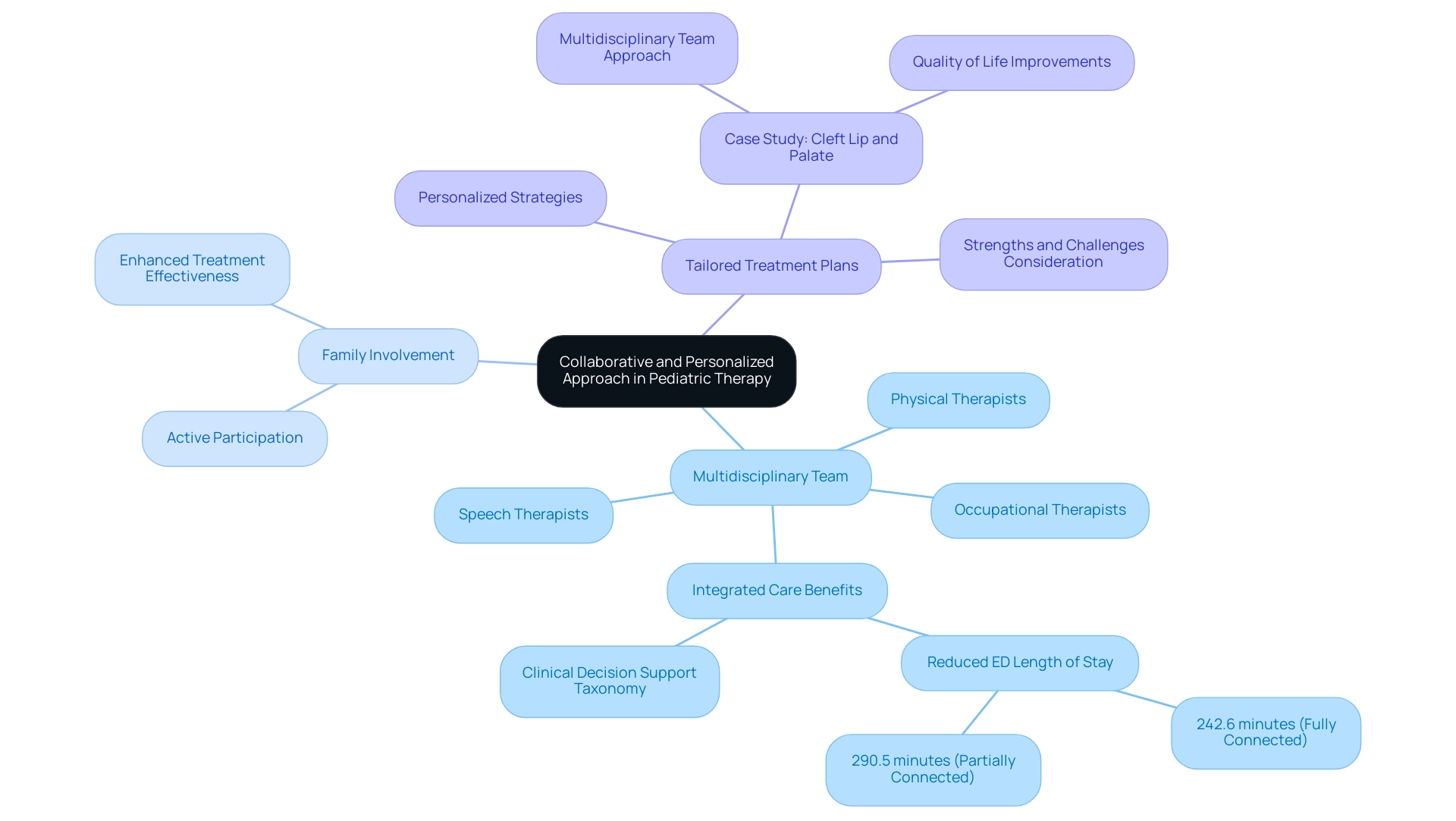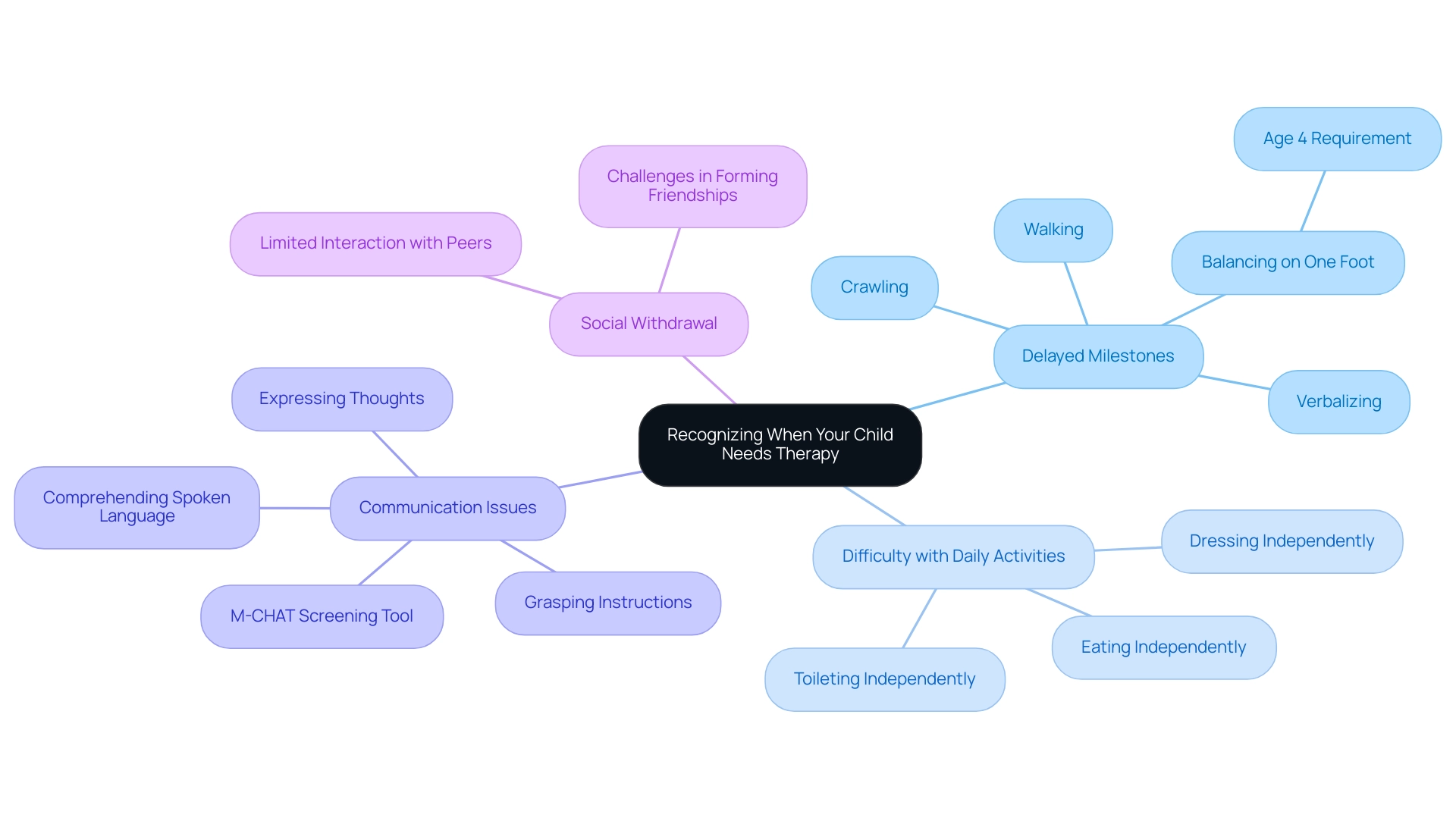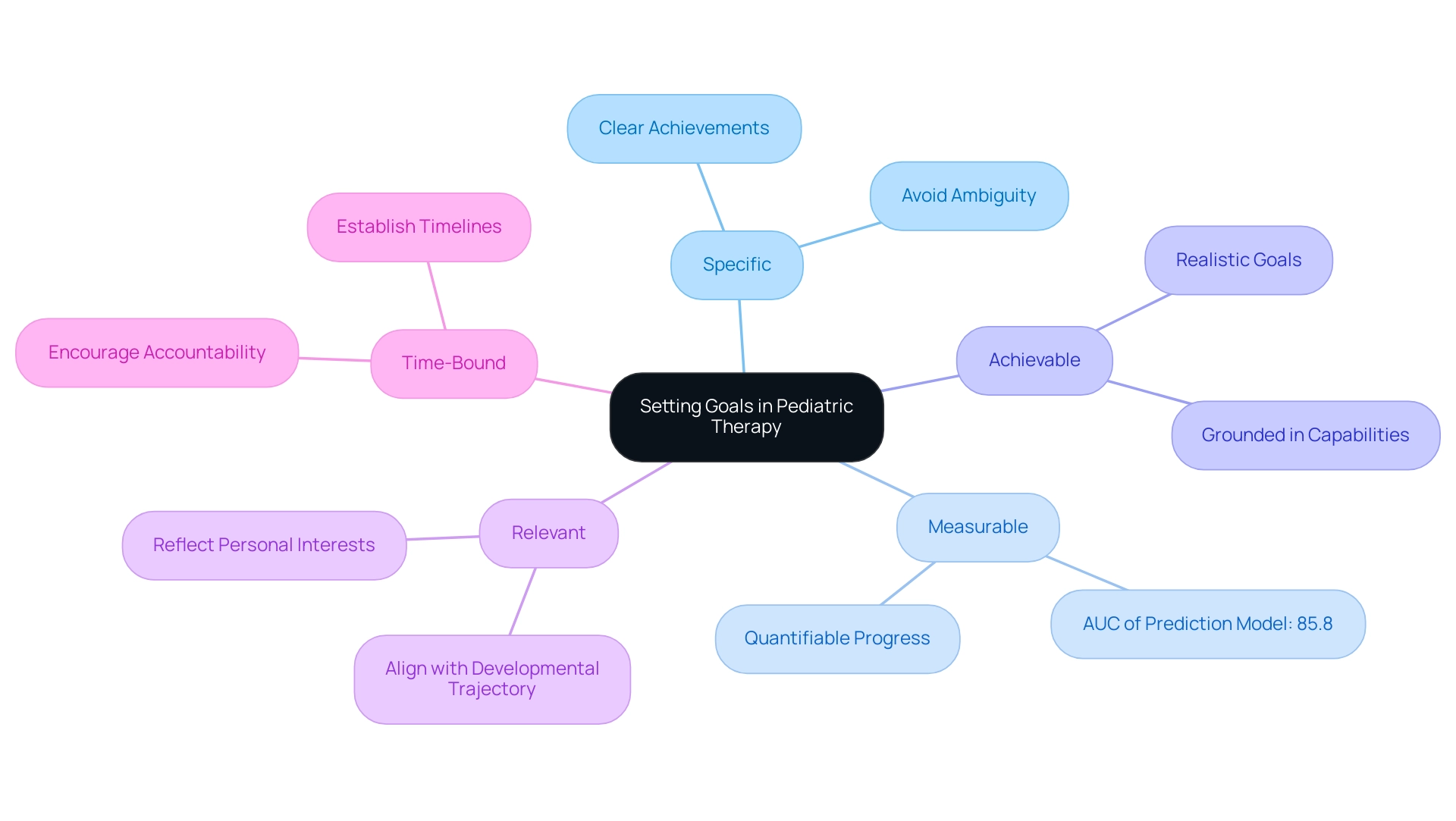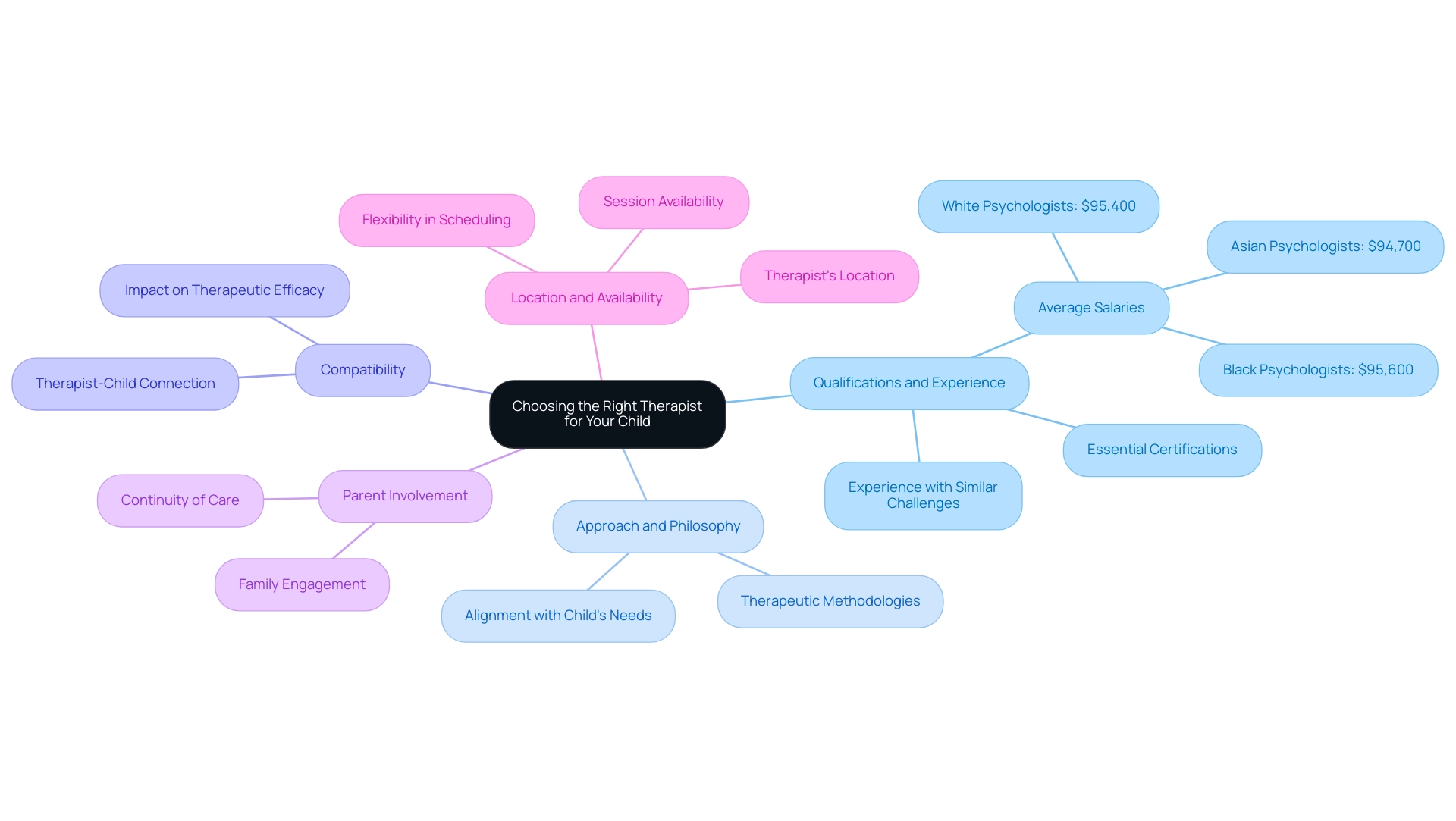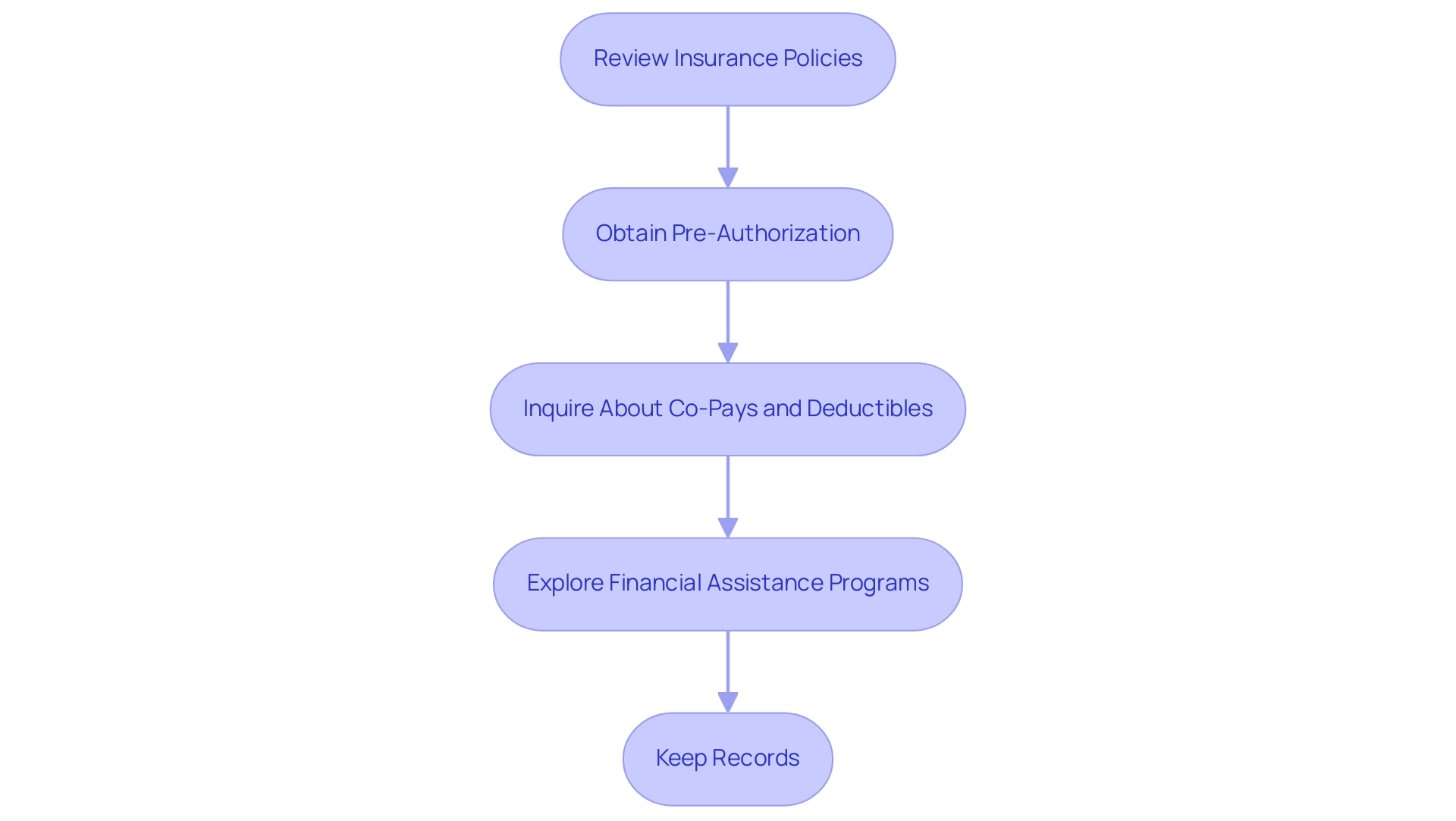Introduction
Pediatric therapy plays a vital role in addressing the unique developmental needs of children, offering a spectrum of therapeutic modalities designed to enhance their overall well-being. From physical therapy aimed at improving mobility to speech therapy that fosters communication skills, each type of therapy serves a distinct purpose in promoting healthy growth.
As parents and caregivers navigate the complexities of childhood development, understanding the various therapies available, recognizing when intervention is necessary, and choosing the right therapist becomes essential.
This article delves into the types of pediatric therapy, the importance of a tailored approach, and practical guidance for parents to support their child's therapeutic journey.
1. An Overview of Pediatric Therapy: Types and Benefits
Pediatric therapy encompasses a varied array of therapeutic methods designed to address the developmental requirements of young individuals. The predominant types of treatment include:
-
Physical Therapy (PT): This approach is centered on enhancing physical function, mobility, and overall fitness. It is particularly beneficial for young individuals facing movement disorders or injuries. A randomized controlled study published in J Back Musculoskelet Rehabil in 2018 demonstrated the efficiency of soft tissue mobilization in infants suffering from congenital muscular torticollis, underscoring the critical role of PT in early intervention.
-
Occupational Treatment (OT): This intervention concentrates on enhancing a young person's ability to carry out everyday tasks and honing fine motor skills. OT is especially essential for young individuals experiencing developmental delays or sensory processing issues, helping to bridge gaps in their functional abilities.
-
Speech Treatment: Targeting communication barriers, speech treatment assists children in developing essential speech and language skills. It is crucial for those with speech delays or disorders, such as stuttering, facilitating better communication and social interaction.
-
Interventions for Non-Synostotic Cranial Deformities: Recent advancements in children's treatment also include interventions for conditions like plagiocephaly. These treatments are essential in correcting head shape abnormalities and promoting healthy cranial development in infants.
The advantages of pediatric therapy interventions are manifold, including enhanced physical capabilities, improved communication proficiency, and increased independence in daily activities. These pediatric therapy treatments are crucial for a young person's overall growth while encouraging confidence and self-worth. According to recent findings, 87% of interventions are primarily focused on improving outcomes for young individuals, reflecting a strong commitment to effective therapeutic practices.
This statistic highlights the emphasis on tangible advantages that treatments provide, such as improved mobility and independence. Moreover, as highlighted by Imms et al.,
Changes in participation are multifactorial and involve individual factors, contextual factors, the nature of the participation activity, and the environment in which the activity is being performed.
This understanding highlights the dynamic interaction between treatment methods and the distinct situations of each young individual, illustrating the thorough nature of youth support in fostering healthy growth.
Additionally, a case study on rehabilitation after brachial plexus injury illustrates the effectiveness of postoperative physical treatment, showing that neuromuscular electrical stimulation can significantly aid nerve regeneration after severe brachial plexus impairment, further emphasizing the critical role of tailored therapeutic interventions.
2. The Importance of a Collaborative and Personalized Approach in Pediatric Therapy
A cooperative and tailored method is crucial in pediatric therapy, as it aligns the treatment with the distinct needs and objectives of every young patient. Key components of this approach include:
-
Multidisciplinary Team: Incorporating various specialists—including physical, occupational, and speech therapists—facilitates a comprehensive understanding of the child's individual requirements. Recent studies highlight that a fully connected multidisciplinary team can lead to significantly reduced emergency department lengths of stay, with recent data indicating an adjusted median length of stay of 242.6 minutes for fully connected groups compared to 290.5 minutes for partially connected teams, showcasing the efficacy of integrated care (p<0.001). Moreover, Wright et al. have developed and evaluated a comprehensive clinical decision support taxonomy for electronic health record systems, which enhances the operational effectiveness of multidisciplinary teams.
-
Family Involvement: Active participation from parents and caregivers is crucial in pediatric therapy. Their insights and engagement can greatly enhance the treatment's effectiveness. Evidence indicates that family participation in pediatric therapy directly relates to enhanced results in treatment, as families provide valuable insights into their offspring's needs.
-
Tailored Treatment Plans: Recognizing that each individual is unique, pediatric therapy requires personalized treatment plans that are vital. These plans take into account the young person's strengths, challenges, and interests, which promotes greater engagement and success in treatment. For instance, the analytical epidemiology study on youngsters with cleft lip and palate illustrated how a multidisciplinary team approach, which included pediatric therapy, resulted in superior care and notable improvements in quality of life, emphasizing the benefits of personalized strategies.
As Mustafa Ozkaynak, PhD, observes, "Collaboration among healthcare professionals and families is essential to improving children's treatment results." By fostering this partnership, pediatric therapy can create a nurturing atmosphere that promotes growth and development, ultimately resulting in improved outcomes for youngsters.
3. Recognizing When Your Child Needs Therapy
Parents play a crucial role in monitoring their child's development and should consider therapy if they observe any of the following indicators:
-
Delayed Milestones: A child not achieving critical developmental milestones, such as crawling, walking, or verbalizing by the expected ages, warrants attention. For example, by age four, a young one should be capable of balancing on one foot for at least two seconds, according to growth standards.
-
Difficulty with Daily Activities: Challenges in performing routine tasks, such as dressing, eating, or toileting independently, can signal the need for pediatric therapy evaluation.
-
Communication Issues: If a child has difficulty expressing thoughts, grasping instructions, or comprehending spoken language, this may suggest underlying concerns that could be addressed through pediatric therapy related to their growth.
-
Social Withdrawal: Limited interaction with peers or challenges in forming friendships can be a warning sign for potential growth delays that may require pediatric therapy.
In light of these signs, it is advisable for parents to consult with a pediatrician or child specialist for a thorough assessment that may include pediatric therapy. Early intervention is crucial, as expert opinions emphasize that pediatric therapy can effectively address growth challenges promptly, leading to significantly better outcomes. Jennifer M. Zubler, MD, from the CDC, states, "Based on 15 years of use, 3 areas for improving the checklists were identified by the CDC."
These areas include:
- Establishing criteria
- Ensuring milestones are above the 50th percentile
- Creating new checklists for 15- and 30-month health supervision visits
Moreover, the CDC highlights the significance of
screening instruments, such as the Modified Checklist for Autism Screening in Toddlers (M-CHAT), to identify concerns like autism spectrum disorder. A case study on motor milestones indicates that by age five, individuals should be able to hop on one foot and hold a crayon or pencil correctly, reinforcing the need for vigilance in recognizing developmental delays.
The proactive method in pursuing assistance can significantly improve a young person's development and overall well-being.
4. Setting Goals and Measuring Progress in Pediatric Therapy
In pediatric therapy, the collaborative process of establishing objectives involves therapists, parents, and the young person to promote effective rehabilitation outcomes. Effective goal-setting adheres to several key principles:
- Specific: Goals should explicitly outline the expected achievements for the individual, avoiding ambiguity to ensure a clear path forward.
- Measurable: It is crucial that progress be quantifiable, facilitating timely adjustments and modifications as necessary to adapt to the individual's evolving needs. Notably, the prediction model for Nop ≥ 4 achieved an area under the curve (AUC) of 85.8%, highlighting the importance of accurate measurements in assessing progress.
- Achievable: Goals must be realistic and attainable within a designated timeframe, ensuring that they are grounded in the individual’s current capabilities.
- Relevant: Each goal should align with the individual’s overall developmental trajectory and reflect their personal interests, fostering engagement and motivation.
- Time-Bound: Establishing a timeline for achieving each goal encourages accountability and provides a structured framework for progress.
Regular assessments, including progress reports and check-ins, play a vital role in monitoring growth. These evaluations not only help identify areas requiring additional support but also celebrate the individual’s achievements, thereby enhancing self-esteem and motivation. A study titled 'Individualized Goal Setting for Pediatric Intensive Care Unit-Based Rehabilitation' emphasizes the effective tailoring of pediatric therapy strategies using the Canadian Occupational Performance Measure.
The findings from this study contribute to improved rehabilitation strategies in pediatric therapy, demonstrating how personalized goal-setting can significantly enhance outcomes in intensive care settings.
As
Dr. Pritchard noted, who received support from prestigious programs such as the Women and Children’s Health Research Institute Recruitment and Retention Award, the focus on individualized goals marks a significant advancement in therapeutic strategies aimed at enhancing youth development. This emphasizes the crucial role that customized strategies play in attaining significant advancements in pediatric therapy.
5. Choosing the Right Therapist for Your Child
When choosing a therapist for your young one, several critical factors should be taken into account:
-
Qualifications and Experience: It is essential to ensure that the therapist holds the appropriate certifications and has substantial experience working with youngsters who present similar challenges. The qualifications of a therapist can significantly influence the effectiveness of treatment. Notably, the average salary for Black psychologists is $95,600, while white psychologists earn about $95,400, and Asian psychologists earn approximately $94,700. These figures highlight the economic landscape of the profession and may impact the availability of qualified therapists.
-
Approach and Philosophy: Therapists often employ various methodologies in their practice. Grasping a therapist's method can assist in assessing if their philosophy aligns with your offspring's distinctive requirements, thereby nurturing a constructive pediatric therapy environment.
-
Compatibility: The connection formed between the therapist and young person plays a crucial role in the success of the process. Research indicates that a strong fit can enhance a young person's comfort and willingness to engage, ultimately leading to improved outcomes. As highlighted in recent studies, therapist-child compatibility is linked to greater therapeutic efficacy.
-
Parent Involvement: A therapist who advocates for family involvement can cultivate a supportive atmosphere that enhances the pediatric therapy treatment process. Engaging parents as active participants allows for better continuity and reinforcement of therapeutic strategies at home.
-
Location and Availability: Practical considerations, such as the therapist's location, session availability, and flexibility in accommodating your schedule, are paramount. Assessing these logistical elements can facilitate the process of regular attendance, which is crucial for therapeutic success.
By allocating time to investigate and perform interviews with prospective therapists, parents can make informed choices that greatly enhance their offspring's developmental journey. In 2021, essential elements for youth obtaining specialized mental health services were recorded, highlighting the significance of careful choice in youth treatment.
6. Navigating Insurance and Financial Considerations for Pediatric Therapy
Navigating insurance and financial factors can pose considerable difficulties for parents seeking pediatric therapy support for their kids. To facilitate this process, consider the following steps:
- Review Insurance Policies: Begin by thoroughly examining your health insurance policy to identify which types of treatment are covered, including any limitations or requirements for referrals. Recent findings indicate that individuals with private health insurance face a higher underinsurance rate (33.7%) compared to those with public insurance (15.0%). This disparity emphasizes the significance of comprehending your coverage, particularly in relation to Medicaid and child health equity discussions.
- Obtain Pre-Authorization: Many insurance plans require pre-authorization for treatment sessions. It is essential to contact your insurance provider to clarify the process and gather the required documentation to avoid unexpected denials.
- Inquire About Co-Pays and Deductibles: Being aware of any co-pays, deductibles, or out-of-pocket expenses associated with treatment sessions can help in budgeting effectively. Financial considerations are essential, particularly as pediatric therapy can be a significant cost for families.
- Explore Financial Assistance Programs: Investigate whether the clinic offers sliding scale fees or specific financial aid programs, such as grants or scholarships for families in need. Programs like the Children's Health Insurance Program (CHIP) or local non-profit organizations can significantly alleviate the financial burden associated with treatment.
- Keep Records: Maintaining thorough records of all treatment sessions, invoices, and communications with insurance companies is vital for potential reimbursement claims. This documentation can support your case if disputes arise regarding coverage.
A recent study titled Differential Risk of Underinsurance in Children highlights the pressing need for tailored health insurance solutions, particularly for those with complex physical conditions and functional limitations. As Dr. Justin Yu noted,
We hypothesized that increased health complexity and private insurance coverage would be associated with higher risk of being underinsured.
By understanding insurance coverage and exploring available financial options, including Medicaid and financial assistance programs, parents can make informed decisions that effectively support their child's pediatric therapy needs.
Conclusion
Pediatric therapy is a multifaceted approach that addresses the unique developmental needs of children through various therapeutic modalities, including physical, occupational, and speech therapy. Each type serves a distinct purpose, whether enhancing mobility, improving daily functioning, or fostering communication skills. The benefits of these therapies extend beyond immediate improvements, contributing to a child's overall development and self-esteem, as evidenced by numerous studies emphasizing the importance of tailored interventions.
A collaborative and personalized approach is paramount in ensuring effective outcomes. By involving multidisciplinary teams and families in the therapeutic process, treatment can be better aligned with each child's specific needs and goals. Recognizing the signs that indicate a need for therapy is crucial, as early intervention can significantly enhance developmental trajectories. Setting clear, measurable goals in therapy not only facilitates progress tracking but also fosters motivation and engagement for the child.
Choosing the right therapist is another critical aspect of the therapeutic journey. Parents should evaluate qualifications, therapeutic approaches, and compatibility to ensure a productive environment. Additionally, navigating insurance and financial considerations can be challenging, but understanding coverage and exploring available resources can help mitigate costs.
In summary, pediatric therapy is essential in promoting healthy development in children. By understanding the various types of therapy, recognizing the need for intervention, and adopting a collaborative approach, parents can effectively support their child's growth and well-being. Empowering children through tailored therapeutic practices not only aids in overcoming challenges but also lays the foundation for a brighter future.
